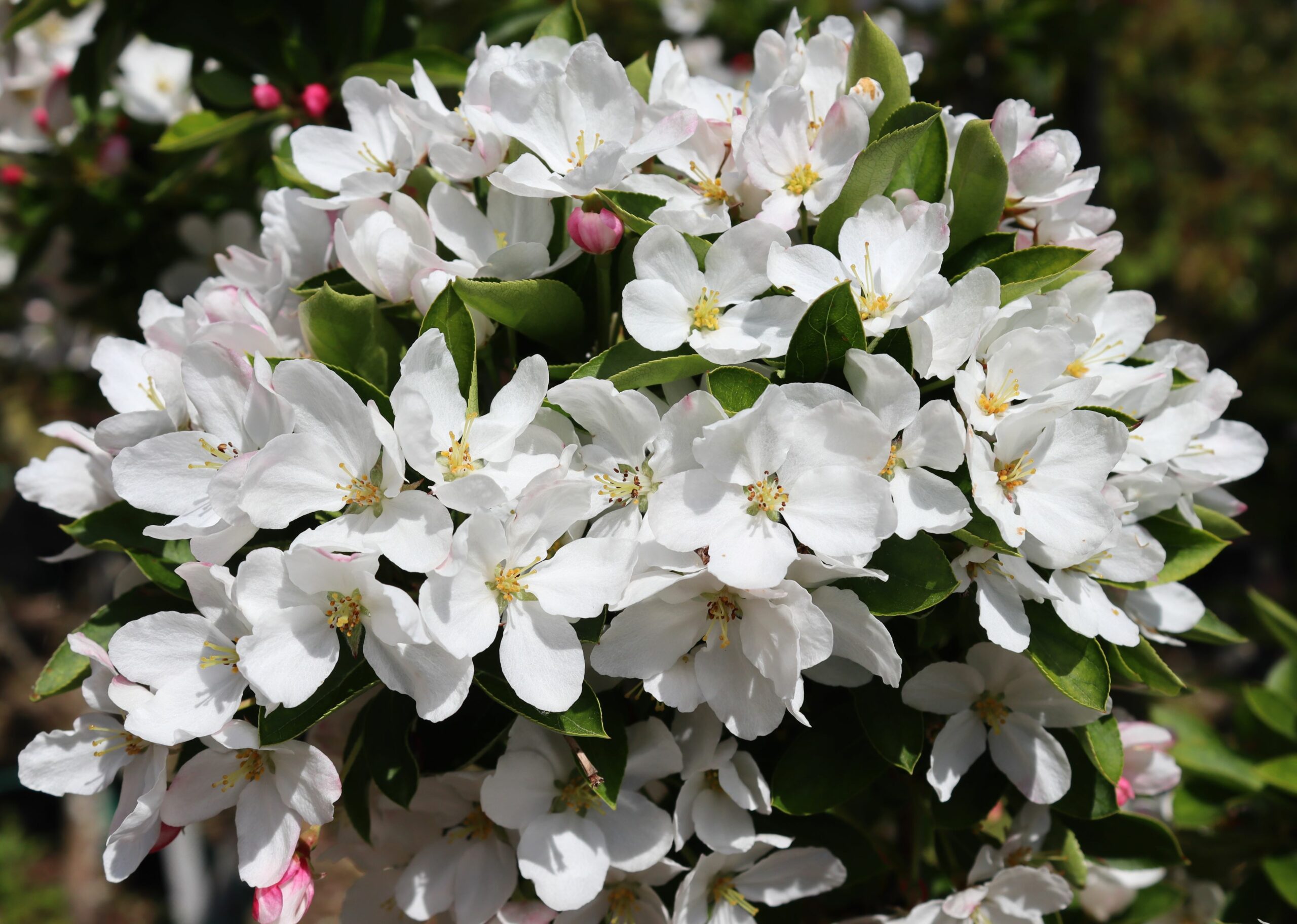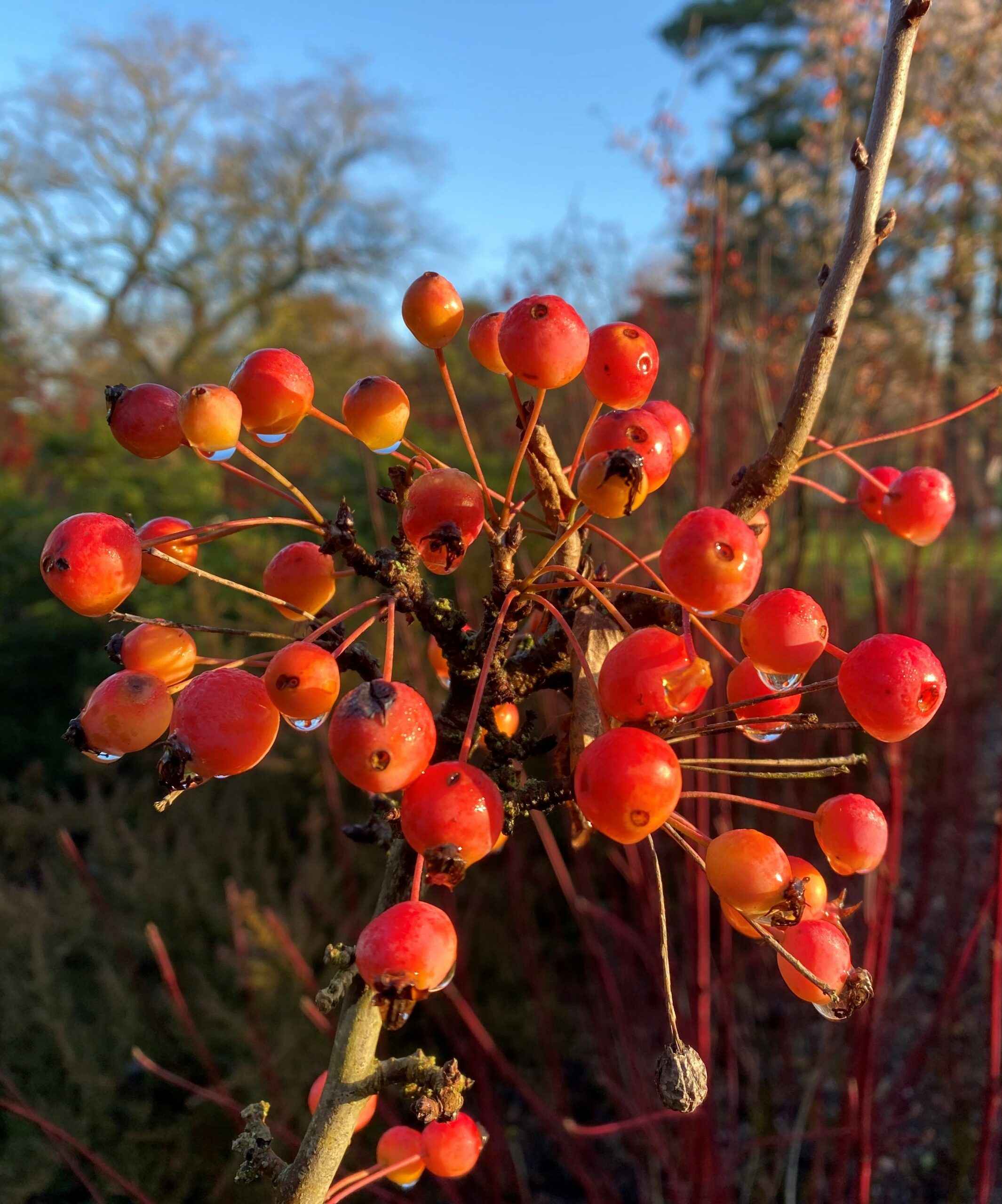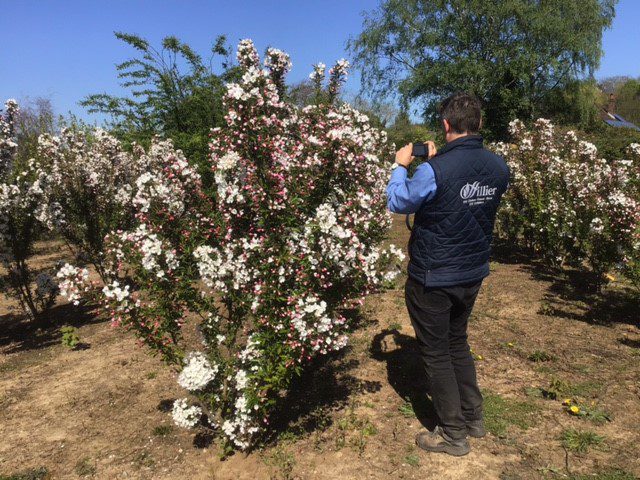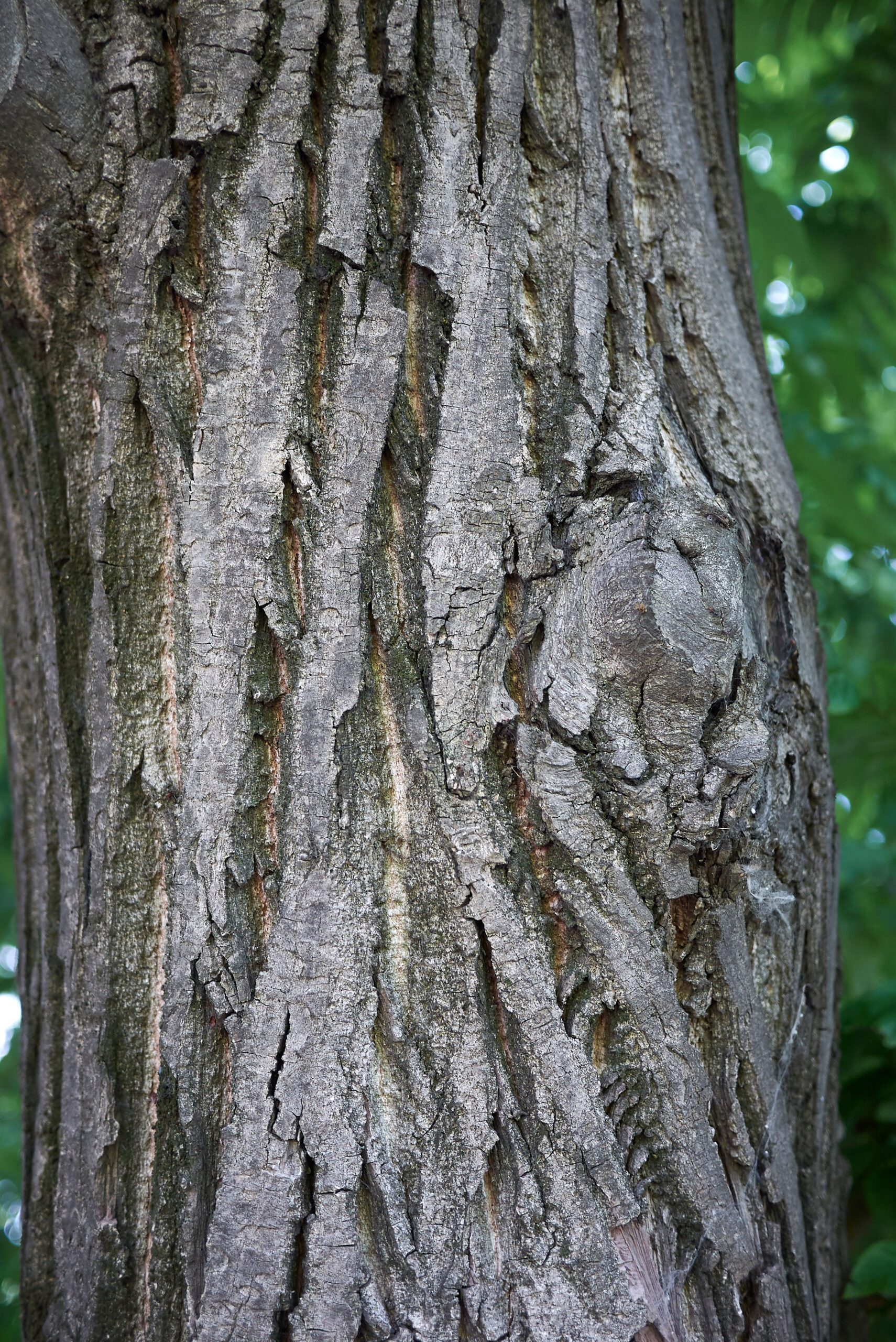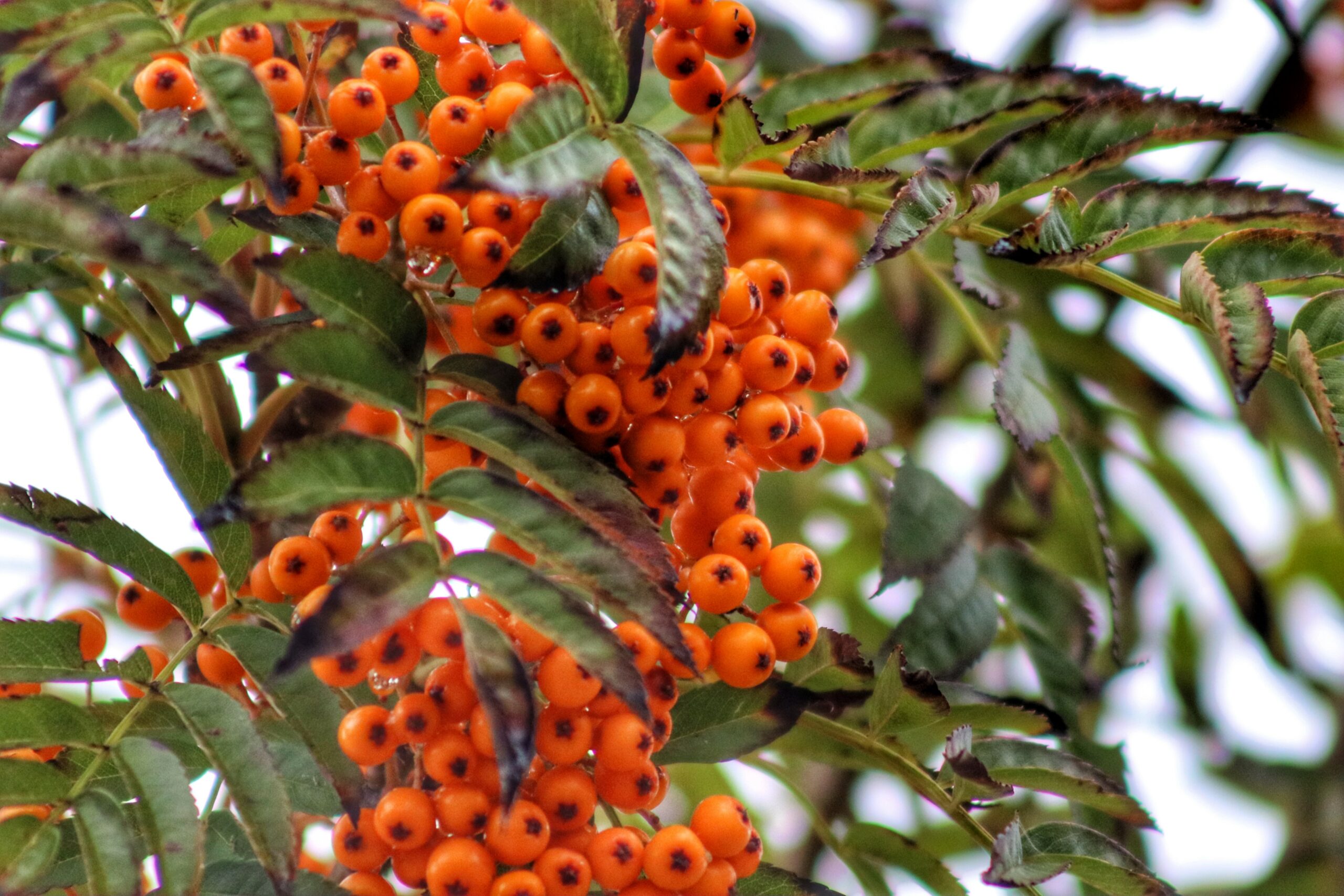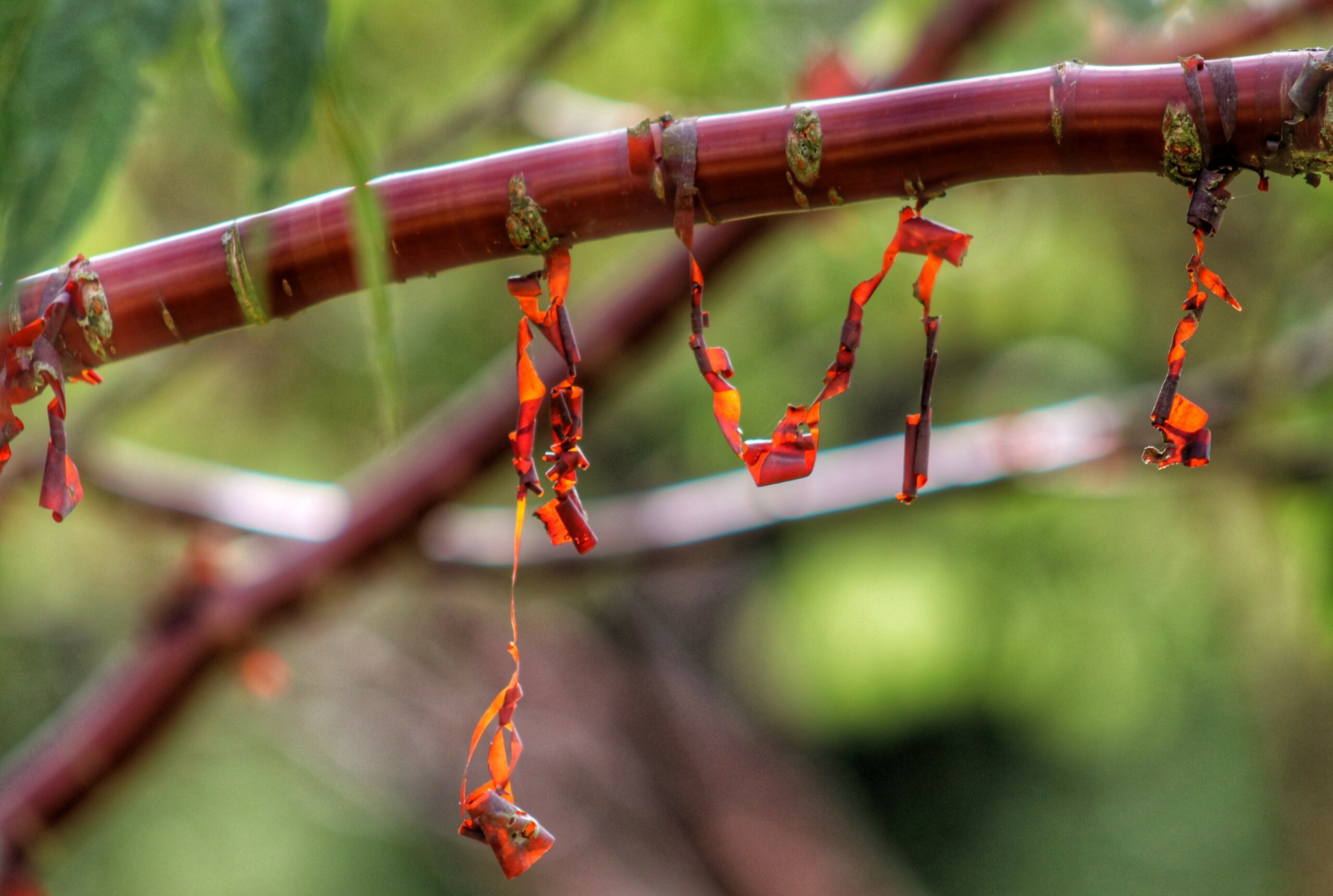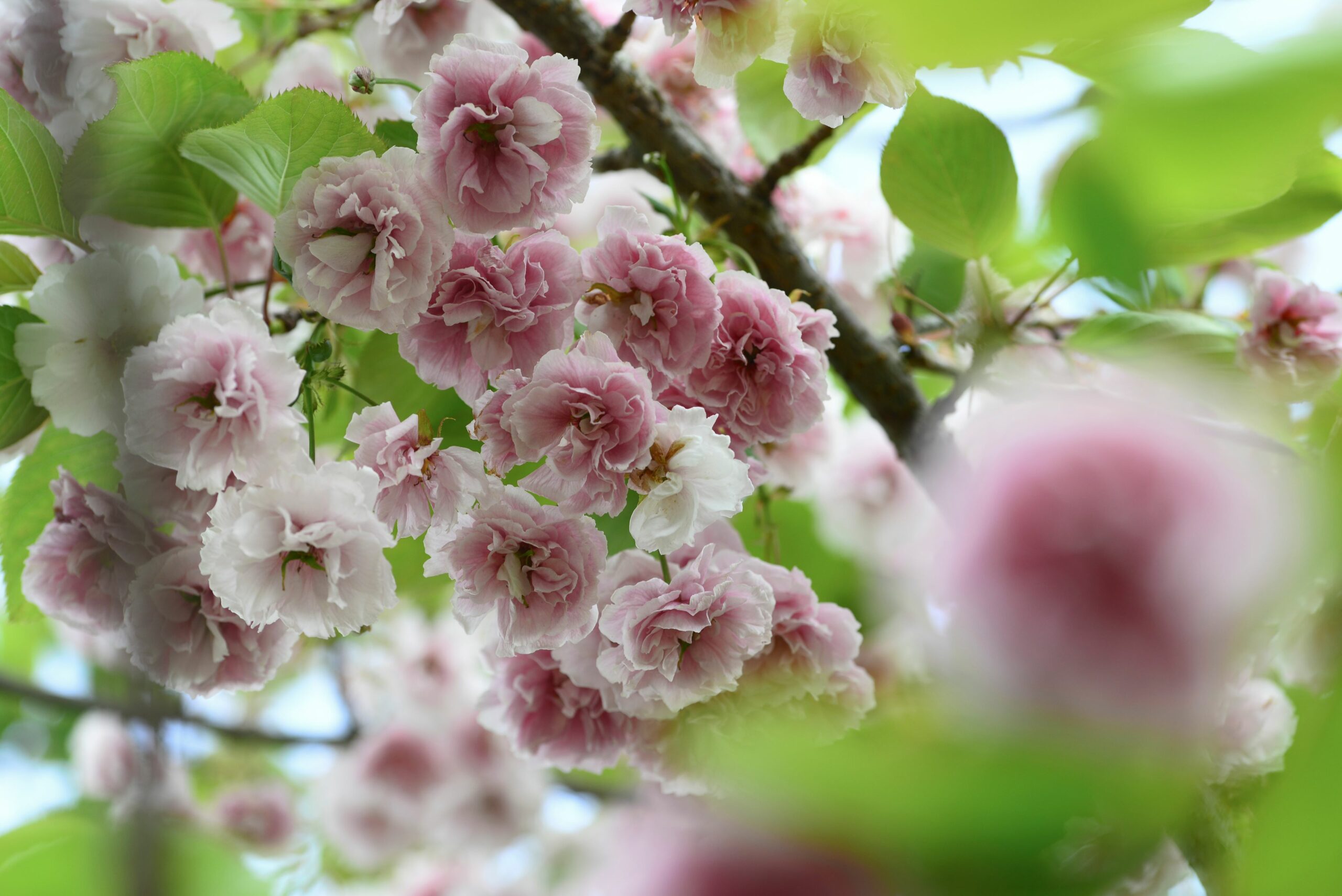Tree Information
Specialities
Tolerances
Wet Soil: Medium
Dry Soil: High
Lime: Medium
Cultivated at the US National Arboretum, the ‘Adirondack’ emerged from a rigorous screening process. Initially, 500 Malus seedlings were deliberately infected with Fire Blight, with only 60 surviving this challenge. Over an 11 year span, these survivors faced additional diseases like scab, powdery mildew, and cedar apple rust. Among them, a select few displayed unparalleled resilience, leading to the selection of Adirondack by Donal R. Egolf in 1974.
By 1987, this variety was available commercially. It boasts an elegant vase shaped crown with upright, ascending branches. It maintains its compact stature, even as it matures, often requiring minimal pruning.
Its buds unfurl in deep crimson, and eventually transition to softer shades of purple-pink. By end of spring, a spectacle of brilliant white flowers with hints of pale pink graces the tree. These blossoms emit a gentle, sweet fragrance, during numerous bees for pollination. Concurrently, the trees robust, dark green leaves maintain a vibrant emerald hue, showing remarkable resistance to powdery mildew and rust.
As summer wanes, a bounty of small, fiery orange fruits emerge, persisting well into early winter. These fruits serve as a food source for birds, ensuring the ‘Adirondack’ remains a focal point of wildlife activity. Given its compact form, seasonal interest and robust characteristics, the resilient tree proves invaluable for various landscape settings, be it courtyards, bustling squares or classic garden layouts.
Visit our Useful Resources for in-depth guides
Discover guides to help you with specifying your trees, caring for your trees and understanding the weights and dimensions of trees.
Useful ResourcesSize
Small
6m high x 2.5m wide after 25 years
Environment
Ideal for confined spaces and next to walk and pathways.
Canopy
Starts off upright and gradually progresses into a vase shape.
Foliage
Leaves unfurl dark green, maintaining a vibrant emerald hue.
Flowers
Crimson red buds which lighten into faded pink in the early spring. These open in late spring with a profusion of magnificent white flowers which are brushed with pink. 5cm in diameter and have a fresh fragrance.
Fruit
An abundance of coppery orange fruit blended with shades of fiery red cover the branches.
Resilience
Adaptable to all well drained soils, including clay, loam and sand. Once established it is drought tolerant and will succeed in a range of pH levels. A hardy tree that likes full sun.
Wildlife
Fragrance of the flowers attracts bees. Fruits are a good food source for birds and wildlife.
Make an Enquiry
Enquire below and speak to one of our expert team. For trades only, for general public enquiries click here.
Find Trees For Your Project
View Our TreesSpeak to a Member of Our Sales Team
Make an Enquiry
